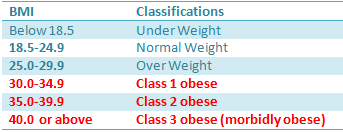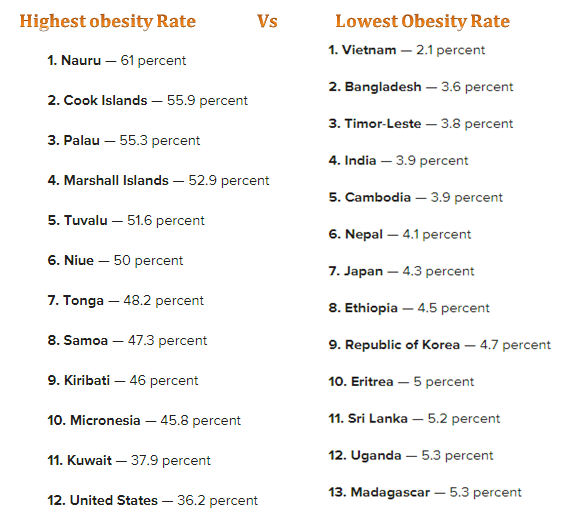Obesity
Obesity is one of the major health issues in the medical sector and it has a negative impact on our health. It is associated with or causative factors of a few other health problems notably hypertension, Diabetes, hyperlipidemia, strokes, heart attacks, osteoarthritis, hyperuricemia and gout, depression and other mental illness etc. Obesity is now a global problem. Every year the rate of obesity is increasing worldwide. In this post, we will have a look at the global scenario of obesity.
Obesity and BMI
Before going to the statistics, we need to know when a person becomes obese. Here, we will see another term, BMI (Body Mass Index). Obesity is determined according to BMI. To calculate we need two parameters; Body weight (in Kg) and Height (in meter). You can calculate manually using the equation in the following image or by BMI calculator. There are various mobile apps available to calculate your BMI.
When will we call a person “obese”?
When a person’s BMI will exceed 30, we will call him/her obese person. According to WHO the classification of obesity is given below:
World obesity statistics
Previously it was believed that obesity was a disease of high-income countries, but recent data is proving it wrong. The incidence and prevalence of obesity are rising in middle and low-income countries too. According to WHO, some of these countries are having “Double burden of diseases”
It is not uncommon to find under-nutrition and obesity co-existing within the same country, the same community, and the same household- WHO
According to WHO, the total number of obese people tripled in number between 1975 and 2016. In 2016, around 13% (650 million) of the world population were obese and 39% (1.9 billion) of people were overweight (whose age 18 years and above). WHO also cited-
Most of the world's populations live in countries where overweight and obesity kills more people than underweight."
Regarding gender, female are slightly ahead of their counterpart. 40% of female are overweight while for the male it is 39%. In the case of obesity, the number is 15% and 11% respectively.
Not only adult people are suffering from obesity, children and adolescents are also having obesity. 340 million children aged 5-19 years of age are either overweight or obese. Shockingly, worldwide 41 million children under 5 years of age are overweight; nearly half of them live in Asia.
In 2016, the World Health Organization also sorted countries according to the obesity rate. According to the list, Nauru is holding the top position with 61% of her population being obese/overweight. On the other hand, Vietnam is in the last of the list of only 2.1% obese people. Upon studying the geographical distribution of obesity, it is clear that the countries of Pacific Oceans are having the highest number of obese people due to shifting from traditional food to imported food from nearby countries notably China, Malaysia, and the Philippines.
"Promotion of traditional foods has fallen by the wayside. They are unable to compete with the glamour and flashiness of imported foods." Dr. Temo K. Waqanivalu, WHO technical officer, Fiji.
Below table shows top countries according to obesity rate. Highest Vs Lowest
If you want to find out your own country's obesity rate which is not mentioned in the above picture, then go to this link and hover the mouse on your country in the world map.








0 Comments